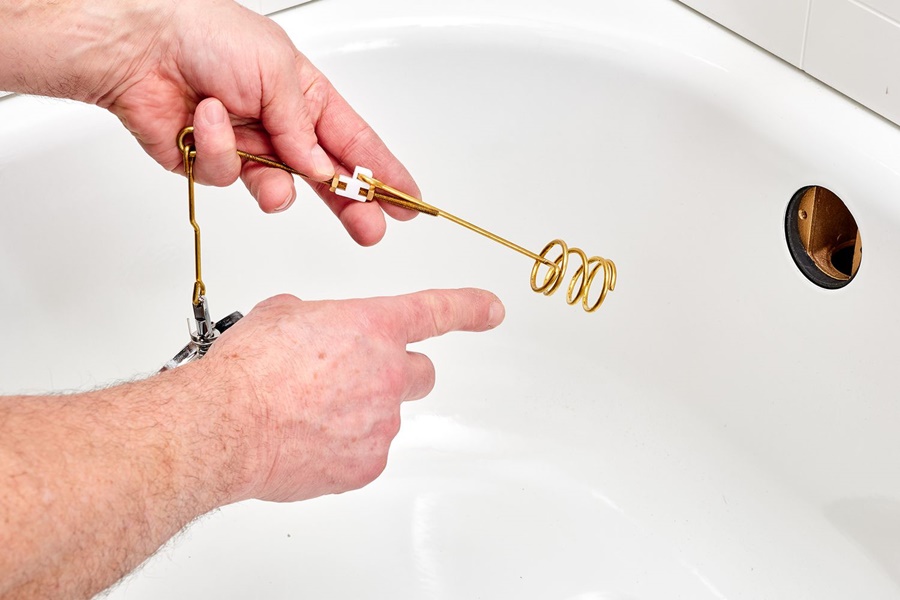A clogged bathtub drain can lead to slow draining water, unpleasant odors, and potential pipe damage. Proper cleaning is essential to maintain hygiene and ensure a functional bathroom. In this comprehensive guide, we reveal expert-recommended techniques and detailed steps to effectively clean and unclog your bathtub drain, using both DIY methods and preventative measures.
Common Causes of Bathtub Drain Clogs
Understanding what causes a clogged bathtub drain is key to tackling the problem at its root.
Hair buildup: One of the most frequent culprits. Hair wraps around components and traps debris.
Soap scum: Hard water and soap react to form a residue that sticks to pipe walls.
Dirt and body oils: Daily use leads to accumulation of grime.
Foreign objects: Small items like shampoo caps or bath beads can get stuck.
Essential Tools and Supplies for Drain Cleaning
To clean your bathtub drain thoroughly, gather the following items:
Rubber gloves
Screwdriver
Drain snake (manual or powered)
Plunger
Baking soda
White vinegar
Boiling water
Old toothbrush or cleaning brush
Bucket
Drain cover or hair catcher (for prevention)
Step-by-Step Guide to Cleaning a Bathtub Drain
1. Remove the Drain Stopper
Begin by removing the drain stopper. Depending on the type, you may need to:
Twist and pull up for push-pull or lift-and-turn stoppers.
Unscrew the top cap using a screwdriver for trip lever-style drains.
Inspect and clean the stopper, removing any visible hair or debris.
2. Manually Extract Hair and Debris
Using rubber gloves, manually pull out any hair or buildup near the surface. A drain claw or wire coat hanger bent into a hook shape can help reach deeper obstructions. Be thorough—often a visible clog is just the tip of a larger blockage.
3. Use a Drain Snake to Remove Deep Clogs
Insert the drain snake into the drain and slowly rotate it to catch any stubborn clogs. Feed it in carefully, twist, and then pull it back out. You may need to repeat this step a few times until the snake comes out clean.
4. Apply Baking Soda and Vinegar Solution
This eco-friendly cleaning method is ideal for dissolving organic matter and deodorizing the drain:
1. Pour ½ cup of baking soda into the drain.
2. Follow with 1 cup of white vinegar.
3. Let the mixture fizz and sit for at least 15 minutes.
4. Boil a kettle of water and carefully pour it down the drain to flush the solution through.
Repeat if necessary for stubborn odors or minor clogs.
5. Plunge the Bathtub Drain
If water is still draining slowly, use a plunger:
Seal the overflow drain with a wet cloth or duct tape.
Fill the tub with enough water to cover the plunger cup.
Place the plunger over the drain and pump vigorously for 20-30 seconds.
Lift to see if the water drains. Repeat as needed.
Advanced Cleaning: Remove and Clean the Overflow Plate
Sometimes buildup behind the overflow plate contributes to poor drainage:
1. Unscrew the overflow plate using a screwdriver.
2. Pull out the trip lever and linkage, if present.
3. Clean all components thoroughly using an old toothbrush and soapy water.
4. Reassemble after drying the parts.
Preventative Measures to Keep Bathtub Drains Clean
Install a Hair Catcher
Using a drain hair catcher is one of the simplest ways to prevent hair from entering the pipes. Clean it regularly to maintain effectiveness.
Routine Flushing
Once a week, pour hot water down your bathtub drain to dissolve soap and oil buildup.
Use Enzymatic Drain Cleaners
Natural, enzyme-based drain cleaners break down organic material without damaging pipes. Use once a month as maintenance.
Avoiding Common Mistakes When Cleaning Drains
Do not overuse chemical cleaners: Harsh chemicals can corrode pipes and harm the environment.
Never force tools into the drain: This can damage pipes or worsen clogs.
Don’t ignore slow drainage: It’s an early sign of a growing blockage.
When to Call a Professional Plumber
If the clog persists after trying all the methods above, or if you notice:
Persistent foul odor
Water backing up into other fixtures
Gurgling sounds
Then it’s time to consult a licensed plumber. Deep blockages or broken pipes may require professional tools and expertise.
DIY Natural Drain Cleaning Recipe for Maintenance
Monthly Maintenance Flush:
½ cup baking soda
½ cup salt
1 cup vinegar
Let sit for 30 minutes, then flush with boiling water.
Conclusion
A clean drain is essential for a healthy bathroom environment. By following these step-by-step cleaning methods, using natural ingredients, and applying preventative strategies, you can ensure your bathtub drain remains clog-free and odorless.

